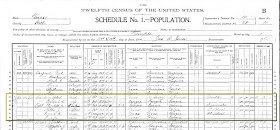 Can-Can girls perform in the Days of '98 Show
Can-Can girls perform in the Days of '98 ShowSoapy builds his empire and dies several times daily in Skagway, Alaska
(note: the Jeff Smith's Parlor sign)
As a "just the facts ma'am" type of historian I am not a big fan of Wikipedia. Anyone can (and they do) make changes, add information, some of it not based in reality. It can be one-hell-of-a lot of work keeping a subject historically accurate. As much as I may complain about Wiki-p I admit a large number of people use it and the information contained within. In fact, a large number of my website hits come from people who came to my sites after visiting the Soapy Smith article on Wikipedia. This makes it worthy to keep track of articles that pertain to Soapy.
Watch out Wikipedia more are on the way.

.
I got the idea to talk about Wikipedia today because of an article I added today about the Shootout on Juneau Wharf. I promised myself that once my book was published I would add as much as I felt was needed. Some of the other articles I have created, corrected or added over the years are as follows.
- Soapy Smith, which was originally created in German.
- Ed "Big Ed" Burns, which is one of those articles I mentioned in which someone insists on adding information without proper provenance, hence the notices "citation needed" all over the page.
- Martin Itjen
- Texas Jack Vermillion
- William Sidney "Cap" Light
Watch out Wikipedia more are on the way.


















































